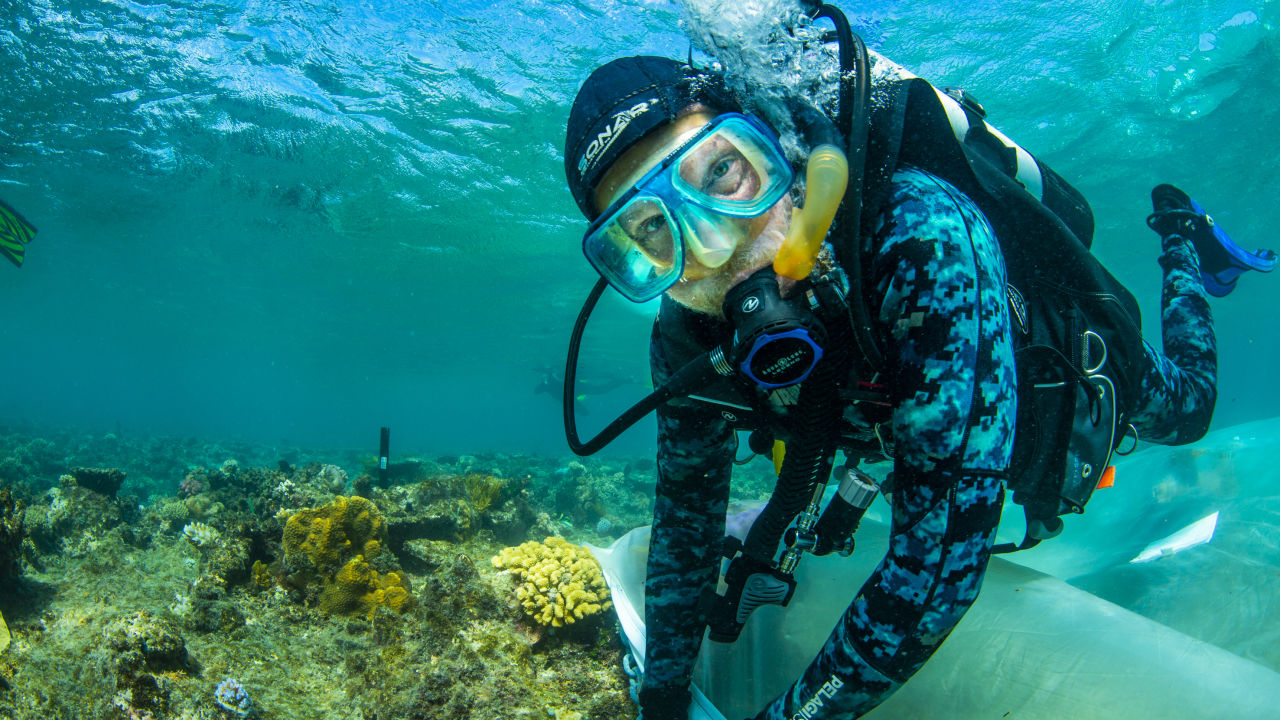Australian coral restoration projects are at the heart of Australia’s battle to protect one of its most treasured natural wonders: the Great Barrier Reef. As the world’s largest coral reef system, the Great Barrier Reef spans over 2,300 kilometers and hosts more than 1,500 species of fish and 400 types of coral. However, with repeated coral bleaching events driven by climate change, the urgency to implement innovative and large-scale restoration efforts has never been greater. From cutting-edge coral IVF and 3D-printed reef structures to the mobilization of Indigenous knowledge and community science, Australia is emerging as a global leader in reef restoration. Organizations such as the Great Barrier Reef Foundation and the Australian Institute of Marine Science are spearheading groundbreaking solutions that blend technology, conservation science, and local engagement.
Behind many successful Australian coral restoration projects are collaborative partnerships between research institutions, government bodies, and eco-conscious citizens. For example, the Reef Restoration Foundation engages community divers in coral nursery projects near Cairns, where coral fragments are cultivated and later replanted on damaged reefs. At the same time, initiatives like Reef Check Australia empower citizen scientists to collect data on reef health, informing national marine policy. Educational programs coordinated by the Great Barrier Reef Marine Park Authority now reach hundreds of schools, ensuring that Australia’s next generation grows up with a deep understanding of reef ecology and the tools to protect it.
Science and technology are revolutionizing how coral restoration is done. One of the most innovative tools in this realm is LarvalBot, a coral-seeding robot developed with the help of Southern Cross University. This autonomous underwater drone can distribute millions of coral larvae onto degraded reefs, increasing coral recruitment rates by over 30%. Meanwhile, researchers from the University of Queensland are experimenting with selective breeding and genetic engineering to produce heat-resistant “super corals” that can better withstand rising ocean temperatures. Even 3D-printed reef structures, crafted from eco-friendly materials, are being deployed to create habitats that mimic natural coral forms, as supported by the Australian Coral Reef Society.
But restoration isn’t just about science—it’s also about governance and long-term policy. The Australian government, through initiatives like the National Environmental Science Program, has committed hundreds of millions of dollars to protect reef biodiversity and support innovation in reef repair. The CSIRO is also actively involved, contributing high-tech tools like AI mapping and remote sensing to monitor reef recovery. In 2022, Australia launched its first climate reef bond, raising AUD 100 million to support restoration projects over the next decade.
In essence, what makes Australian coral restoration projects so impactful is their holistic nature. They combine traditional ecological knowledge, cutting-edge science, grassroots activism, and sustainable financing into a single, integrated approach. This multifaceted commitment ensures that the reefs not only survive but thrive—resilient and teeming with life for generations to come.
Reviving the Reefs: Innovative Coral Restoration in Australia
Coral Bleaching and Urgency for Restoration
In the past decade, coral bleaching events have intensified across Australia, with the Great Barrier Reef experiencing mass bleaching in 2016, 2017, 2020, and 2022. According to the Australian Institute of Marine Science, approximately 91% of the reef was affected by bleaching in 2022 alone. This ecological crisis has amplified the urgency of implementing widespread Australian coral restoration projects to preserve marine biodiversity and coastal livelihoods.
Coral Nurseries: A Hands-On Approach
One of the most successful strategies in coral rehabilitation has been the use of underwater coral nurseries. In Queensland, over 60 coral trees have been installed since 2018, cultivating fragments of heat-resistant coral species. These nurseries allow for controlled growth before transplanting, increasing the survival rate of young corals by nearly 70%.
Genetic Engineering for Resilience
Australian researchers are now experimenting with genetic modification and assisted evolution to enhance coral resistance. The University of Queensland has successfully bred corals that can tolerate temperatures 1.5°C higher than average. These developments are integrated into Australian coral restoration projects, ensuring that restored reefs are more adaptable to climate change.
Community Science in Action
Volunteers have become a vital force in reef restoration. Programs like Reef Restoration Foundation in Cairns engage local divers to monitor coral nurseries and replant corals. As of 2024, over 10,000 coral fragments have been planted by citizen scientists, illustrating the collective commitment to restoring reef ecosystems.
Economic Incentives and Reef Tourism
Tourism tied to the Great Barrier Reef generates over AUD 6 billion annually. Recognizing this, both governmental and private sectors have invested in Australian coral restoration projects as an economic safeguard. In 2023, AUD 200 million was pledged to enhance restoration efforts and maintain tourism-dependent economies.
Guardians of the Great Barrier Reef: Community and Science Unite
The Role of Traditional Owners
Aboriginal and Torres Strait Islander groups have long acted as stewards of the reef. Through Indigenous Ranger Programs, over 80 Traditional Owners actively contribute to Australian coral restoration projects. Their ecological knowledge of coral health and water cycles is proving invaluable in designing sustainable practices.
School Programs and Youth Engagement
Australian schoolchildren are becoming young reef guardians through education programs initiated by the Great Barrier Reef Marine Park Authority. More than 310 schools now participate in projects related to reef monitoring and coral gardening, embedding conservation values early.
Citizen Science and Digital Monitoring
Reef Check Australia has trained more than 1,500 citizen scientists who conduct surveys using standardised digital protocols. Their data helps scientists map bleaching trends and restoration needs. In 2023, volunteers provided data on over 200 reef sites, directly influencing decisions in Australian coral restoration projects.
Local Businesses Supporting Coral Health
In regions like Port Douglas and Airlie Beach, local dive operators partner with restoration nonprofits. These businesses donate boat time, provide training sessions, and help plant corals during tours. In 2022 alone, community-business partnerships facilitated the transplantation of over 12,000 coral fragments.
NGO Partnerships Boosting Capacity
Collaborations between NGOs like the Coral Nurture Program and the Australian government have expanded restoration capacity. With joint funding exceeding AUD 50 million since 2021, these partnerships have deployed coral frames across over 25 reef sites, substantially advancing the reach of Australian coral restoration projects.
Coral Comeback: Technologies Transforming Reef Recovery
3D Printing Reefs
To mimic natural reef habitats, scientists are employing 3D printing technology. In 2023, the Australian Institute of Marine Science used biodegradable 3D-printed reef structures on Lizard Island. These structures increase coral larvae settlement by 35%, offering promising scalability for Australian coral restoration projects.
Robotics and Coral Seeding
The LarvalBot, a coral seeding drone developed by Southern Cross University, distributes millions of coral larvae onto damaged reefs. In trials at Heron Island, over 1.2 million larvae were released, resulting in a 30% increase in coral recruitment over six months. These innovations are now integral to Australian coral restoration projects.
AI-Powered Reef Mapping
Artificial Intelligence helps identify optimal sites for coral planting. Through satellite and underwater imaging, AI algorithms analyze reef health and predict future bleaching hotspots. As of 2024, AI-based tools have surveyed over 1,000 kilometers of reef, streamlining restoration strategies.
Coral IVF and Reproductive Assistance
The Coral IVF project involves collecting coral eggs and sperm during mass spawning events. Fertilized embryos are then grown in labs and released into reef areas. Since 2016, over 200 million coral larvae have been successfully seeded, with survival rates surpassing 15%, a breakthrough for large-scale restoration.
Biodegradable Mesh and Eco-Materials
To minimize ecological disruption, researchers are developing eco-friendly materials for coral attachment. A 2023 pilot near Magnetic Island used biodegradable mesh to anchor coral fragments, eliminating plastic waste and promoting faster integration into natural habitats. Such methods are increasingly adopted across Australian coral restoration projects.
Beneath the Surface: Australia’s Fight to Save Coral Ecosystems
Climate Change: The Root Threat
Rising sea temperatures remain the most significant challenge. The Bureau of Meteorology reported that ocean temperatures around the reef increased by 1.1°C between 1900 and 2023. This warming drives mass bleaching events, emphasizing the vital role of Australian coral restoration projects in combating ecosystem collapse.
Marine Protected Areas (MPAs)
Australia has designated over 344,000 square kilometers as MPAs, including much of the Great Barrier Reef. Within these zones, restoration projects are prioritized, ensuring protection from overfishing and industrial activities. MPAs are central to implementing and safeguarding Australian coral restoration projects.
Funding Through Climate Bonds
Innovative financing is gaining traction. In 2022, the Climate Bonds Initiative supported AUD 100 million in reef restoration bonds, channelling investments into scalable coral restoration technologies. These financial tools offer long-term sustainability for Australian coral restoration projects.
Heat-Tolerant Super Corals
Through selective breeding, scientists have developed “super corals” that can endure prolonged heat stress. In 2023, trials showed a 60% survival rate among super corals versus 20% among non-engineered counterparts. These are now propagated widely in coral nurseries along the Queensland coast.
Monitoring and Long-Term Research
Continuous data collection underpins all restoration efforts. The National Environmental Science Program supports 40+ research institutions monitoring reef recovery. With over 4,000 hours of underwater footage collected annually, this research enhances the precision and adaptability of Australian coral restoration projects.




